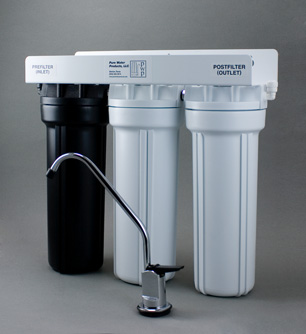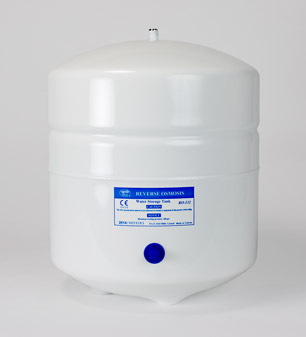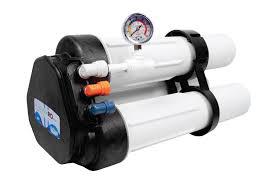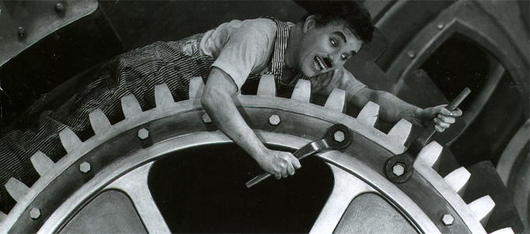The Pure Water Occasional for August 24, 2015
In this mid-August Occasional, you'll hear about Chinese cave graffiti, scary pipelines, the Merlin, El Niño, shade balls, and bladder tanks. Read about the Gold King mine, the Poland Springs crash, the sinking bridge, and the Endbridge pipeline. Learn what affects the price of water, how hospitals cope with drought, and who was caught stealing water from a fire hydrant. Read about the Animas River, the Cuyahoga River fires, E. coli in Konawa, a giant straw in Lake Mead, the daily water consumption of Sydney, Australia, plus America's biggest irrigated crop and America's biggest cash crop. You'll see Lake Mead shrink before your very eyes, marvel at California's new shower head requirement, and thrill to Pure Water Annie's discussion of undersink water filters and Gene Franks' impassioned defense of reverse osmosis tanks. And, as always, there is much, much more.
The Pure Water Occasional is a project of Pure Water Products and the Pure Water Gazette.
To read this issue on the Pure Water Gazette's website, please go here. (Recommended! When you read online you get the added advantage of the Gazette's sidebar feed of the very latest world water news.)
Thousands of mines with toxic water lie under the western US
Colorado's Animas River After the Gold King Mine Spill
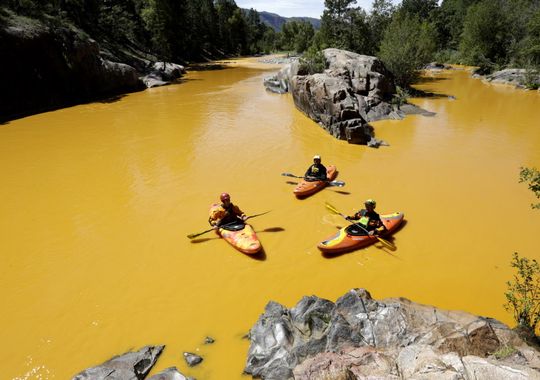
Beneath the western United States lie thousands of old mining tunnels filled with the same toxic stew that spilled into a Colorado river earlier this month, turning it into a nauseating yellow concoction and stoking alarm about contamination of drinking water.
Though the spill into the Animas River in southern Colorado is unusual for its size, it's only the latest instance of the region grappling with the legacy of a centuries-old mining boom that helped populate the region but also left buried toxins.
Until the late 1970s there were no regulations on mining in most of the region, meaning anyone could dig a hole where they liked and search for gold, silver, copper or zinc. Abandoned mines fill up with groundwater and snowmelt that becomes tainted with acids and heavy metals from mining veins which can trickle into the region's waterways. Experts estimate there are 55,000 such abandoned mines from Colorado to Idaho to California, and federal and state authorities have struggled to clean them for decades. The federal government says 40 percent of the headwaters of Western waterways have been contaminated from mine runoff.![]()
Last week, the Environmental Protection Agency was trying to staunch leakage from a gold mine — not worked since 1923 — high in the San Juan mountains of southern Colorado. But workers moving debris from the mine tunnel accidentally opened up the passage, leading to a million gallons of sludge spilling into a creek that carried it into the Animas River. From there the discharge headed toward the Colorado River, which provides water to tens of millions of Westerners.
"The whole acid draining issue is something we struggle with in the western United States," said Bruce Stover, the Colorado Department of Mining official in charge of dealing with abandoned mines in that state.
One of the complicating factors is money and legal liability. Cleaning up the mines is very costly, and the Clean Water Act says that anyone who contributes to pollution of a waterway can be prosecuted for a federal crime, even if they were trying to clean up pollution. That's kept environmental groups from helping the EPA treat water and tidy up mines. Groups for several years have been pushing for a federal law that would let so-called "Good Samaritan" groups help with cleanup without being exposed to legal liability.
"There's still a whole generation of abandoned mines that needs to be dealt with," said Steve Kandell of Trout Unlimited, one of the organizations backing the bill.
But the Wednesday spill from the Gold King mine shows the amount of damage that the slightest cleanup accident can inflict. The mine is one of four outside the old mining town of Silverton that have leaked heavy metals into Cement Creek, which flows into the Animas. Cement Creek is so poisoned that no fish live there and the EPA has long registered abnormal levels of acidity and heavy metals in the upper Animas that have also injured aquatic life.
Downstream, though, the Animas flows through the scenic town of Durango and is a magnet for summer vacationers, fishermen and rafters. The river turned yellow Thursday, emitting a sickening stench and sending water agencies scrambling to shut off the taps from the waterway.
The EPA apologized profusely to residents for both the accident and failing to warn anyone for the first 24 hours. During a town hall meeting in Durango on Friday, a restaurant owner asked the EPA if it would compensate businesses for lost revenue, while officials warned that the river may turn yellow again in the spring, when snowmelt kicks up the settled contaminated sediment.
The history of the Gold King and its neighboring mines is also an example of the difficulty in cleaning up old waste. The EPA had initially tried to plug a leak in another mine that drained into Cement Creek, the American Tunnel, but that simply pushed more contaminated water out of the neighboring mines such as Gold King.
"In this day and age, everyone wants the quick fix, but these things take time," said Jason Willis, an environmental engineer who works with Trout Unlimited in Colorado. "These are site-specific tasks."
Stover said it was particularly galling that the Animas was contaminated by the very chemicals that environmental officials have been trying to remove from its watershed.
"It's very unfortunate," Stover said. "We've been fighting this war for years, and we've lost a battle. But we're going to win the war."
Source: Fox News.
Pure Water Gazette Fair Use Statement
Let free market determine price for water
by John Ford
Gazette's Introductory Note: This editorial comment by attorney John Ford of Orange County, CA presents ideas that deserve consideration. Although relying strictly on "the free market" to set the price of an essential commodity would certainly create its own set of problems, allowing the real cost of providing water to play a major part in determining of the price we pay would certainly make sense. The Gazette has consistently advocated higher water prices as a means of conservation as well as a necessary part of a well-funded public water system. We forget that we live in a world of subsidized products. Water is not the only commodity for which we pay way less than the real cost. If "the free market" alone determined the price of gasoline, few of us would be driving cars and eating almonds trucked from California. While we certainly need to reform and simplify our antiquated water distribution system and increase the price we pay for water, we believe that water is an essential element that belongs to us all and that allowing "the free market" alone to determine its distribution and availability would result in water being distributed the same way that money is distributed--with 1% of the population controlling most of it.--Hardly Waite.
As California searches for solutions to our ongoing drought, we would do well to look to how Australia successfully responded to a similarly severe drought nearly 20 years ago. In 1995, Australia found itself in the midst of the most serious drought since European settlement began. Rivers were drying up, and farms were going fallow all over the country. The crisis was so severe that Australia was forced to do something that was considered radical at the time: It adopted a market price for water.![]()
The basic argument for a water market is straightforward. People should pay for the resources they use and they should pay what the resource is actually worth. If people have to pay a market price for water, then they will be encouraged to conserve in the ways that are the most economically efficient. In California, there is no market price for water. Water in this state is artificially cheap – this low price encourages overconsumption that is harmful to both our economy and our environment. A market price for water would solve this problem.
Australia proved the theory behind water markets could work in the real world. Australia is subject to regular (often severe) droughts. The severity of the drought that began in 1995 forced Australia to try a variety of measures to combat water scarcity. It tried everything, from mandated cutbacks to building huge, expensive desalination plants. Nothing worked. Then, in 2007 Australia adopted a national system for trading water rights, building on smaller programs created in a previous drought by some of Australia’s states. In doing so, they created a national market for water.
After water markets were adopted, water consumption in Australia fell by 35 percent. Today, water consumption in Sydney is only about 83 gallons per person per day. Compare this with 193 gallons a day in Irvine, 186 gallons in Anaheim and 219 gallons in Orange. Australia got its citizens to conserve by using prices. Because they have to pay the market price for water, residents of Sydney pay about $6.50 per 1,000 gallons of water. In Irvine, the cost is much less, at only $3.19 per 1,000 gallons. But because people in Sydney use so much less water, the average person there pays only about $196 per year for water, whereas residents of Irvine pay about $228 per year for water.
Put simply, markets worked. A modest price increase resulted in significant conservation with only a modest impact on consumers’ pocket books.
In California, there is no market price for water. Of California’s 58 counties, 22 restrict any trading of water for any reason. Water in California is governed by a convoluted morass of regulations and bureaucracy. The state has 3,000 separate water districts and agencies, many of which exist only to sell water to each other at artificially low prices. Orange County alone has 28 separate water agencies.
This bureaucratic tangle means that instead of adopting a rational system of water trading based on market prices, we have responded to our drought by putting restrictions on when a restaurant can serve a glass of water to its patrons. No serious person believes this sort of rule will have a measurable impact on conservation.
If leaders in Sacramento want to do something that would actually alleviate the drought in a way that would protect both our environment and our economy, they should take inspiration from Australia, do away with pointless red tape and adopt a market price for water.
Source: The Orange County Register.
Pure Water Gazette Fair Use Statement
The Pure Water Gazette's Famous Water Pictures Series
The Cuyahoga River Fire Pictures
Cuyahoga River on fire in 1952. This fire was the worst of the Cuyahoga fires. This picture and others created a demand for action. (Click picture for a larger view.)
Cuyahoga River Fire
by Michael Rotman
Pure Water Gazette Introductory Note: When water catches fire it gets people's attention. We've all seen pictures recently of burning well water, laced with methane from hydraulic fracturing operations. So far, these spectacular displays have provoked only a timid "more studies are needed" response from environmental regulators. We may need a Cuyahoga River event to get the country's attention.
The Cuyahoga River at Cleveland caught fire at least 13 times in the past two centuries. The first recorded fire was in 1868. The "most fatal" was in 1912, when five people were killed. The final fire, 1969, although it wasn't the biggest or the worst of the Cuyahoga fires, played a big part in the advancement of the environmental reforms of the 1970s and was even instrumental in the creation of the Clean Water Act. The 1969 fire came at a time when the country was ready to listen.
All the Cuyahoga fires (the 1952 fire was the worst) were the result of numerous petroleum spills, the dumping of fats and greases by slaugherhouses, acids from steel plants, and dyes from paint plants. There were also a lot of picnic benches, screen doors, automobile tires, boxes, and other combustible debris washed into the river by rains. Add to that much untreated human sewage from the Cleveland-Akron area, which may not have burned but certainly contributed to the stench.
Here is an account of the fires from a Cleveland historian. We've added the pictures and captions.--Hardly Waite.![]()
The story of the Cuyahoga River fire of 1969 - the event that sparked pop songs, lit the imagination of an entire nation, and badly tarnished a city's reputation - is built more on myths than reality. Yes, an oil slick on the Cuyahoga River - polluted from decades of industrial waste - caught fire on a Sunday morning in June 1969 near the Republic Steel mill, causing about $100,000 worth of damage to two railroad bridges. Initially the fire drew little attention, either locally or nationally. The '69 fire was not even the first time that the river burned. Dating back to the beginning of the twentieth century, the river had caught fire on several other occasions.
Photo of the 1948 Cuyahoga Fire. (Click picture for a larger view.)
The picture of the Cuyahoga River on fire that ended up in Time Magazine a month later - a truly arresting image showing flames leaping up from the water, completely engulfing a ship - was actually from a much more serious fire in November 1952. No picture of the '69 river fire is known to exist.
Throughout much of Cleveland's history, water pollution did not trouble the city's residents too much. Instead, water pollution was viewed as a necessary consequence of the industry that had brought the city prosperity. This attitude began to change in the 1960s as ideas associated with what would become known as environmentalism took shape. In 1968, Cleveland residents overwhelmingly passed a $100 million bond initiative to fund the Cuyahoga's clean up. Also, by this time deindustrialization was somewhat alleviating the pollution problem, as factories closed or cut back operations. Ironically, the city and its residents were beginning to take responsibility for the cleanliness of the river in the years before the infamous fire of 1969.
U.S. Steel plant belching untreated chemical discharge into the Cuyahoga in 1965. (Click picture for larger view.)
The '69 fire, then, was not really the terrifying climax of decades of pollution, but rather the last gasp of an industrial river whose role was beginning to change. Nevertheless, Cleveland became a symbol of environmental degradation. The Time article contributed to this, as did the notoriety of Cleveland Mayor Carl Stokes. Stokes, who was the first black mayor of a major city when elected in 1968, became deeply involved with the issue, holding a press conference at the site of the fire the following day and testifying before Congress - including his brother US Representative Louis Stokes - to urge greater federal involvement in pollution control. The Stokes brothers' advocacy played a part in the passage of the federal Clean Water Act of 1972. In Cleveland, a number Cleveland State University students celebrated the inaugural Earth Day in 1970 by marching from campus to the river to protest pollution.
Even though it has been misunderstood, the 1969 Cuyahoga River fire did help bring about positive change. The river's water quality improved during the following decades, and business investors capitalized on this by converting parts of the Flats' abandoned industrial landscape into an entertainment district featuring restaurants, nightclubs, and music venues.
Much of the industry that both made Cleveland rich and caused its river to burn may never be coming back, but Clevelanders are meeting this challenge by reshaping their city to reflect its current realities.
The Cuyahoga Today Is Fireproof. Environmental Regulation Works.
Source: Clevelandhistorical.org
Water News for Mid-August 2015
At the University of Texas, Austin, researchers for the first time have used seismic sensors to track meltwater flowing through glaciers and into the ocean, an essential step to understanding the future of the world’s largest glaciers as climate changes. Details and pictures.
The city of Konawa, Oklahoma had to close its entire water distribution system down because of E.coli contamination.
Scientists speculate that "water worlds" without land will not support life.
The American lawn is now the largest single 'crop' in the U.S. Americans’ lawns now cover an area three times larger than any irrigated crop in the U.S.
Latest forecast suggests 'Godzilla El Nino' may be coming to California. The strengthening El Niño in the Pacific Ocean has the potential to become one of the most powerful on record, as warming ocean waters surge toward the Americas, setting up a pattern that could bring once-in-a-generation storms this winter to drought-parched California.
This summer's top horror movie may be this short piece that describes an oil pipeline below the Great Lakes.
Here’s the gist: A company called Enbridge (appropriately evil-sounding) owns a 62-year-old pipeline running between Lake Huron and Lake Michigan along the Straits of Mackinac. The pipeline was originally built to last 50 years and is in questionable shape, but don’t worry — Enbridge says they have everything under control. Sure, the company had 800 spills between 1999 and 2010, and yes, one of those spills was the worst inland spill in U.S. history, causing more than 800,000 gallons of oil to spew into the Kalamazoo River in 2010. But no matter — there’s a very nice Enbridge employee in the video who says that the company doesn’t want to have any more spills.
As if we didn't have enough to worry about, Ancient Chinese graffiti warns of droughts ahead. Cave inscriptions stretching back five centuries record the impact of disastrous droughts in central China − and help scientists predict that another is due before 2040. Although we can discount Biblical predictions and Nostradamus, scientists are concerned about climate forecasts found in ancient graffiti on the walls of a cave in central China.
California will soon have toughest shower head requirements in nation.The flow of water from shower heads and bathroom faucets in California will be sharply reduced under strict new limits approved Wednesday by the state Energy Commission.
Accused of stealing water from a Nashville fire hydrant.
The man pictured above and his son were charged by Nashville police with stealing as much as a million gallons of water from a Nashville fire hydrant. Full details with pictures from the crime scene.
How marijuana is making California drought worse.Environmental studies find that marijuana, now the top cash crop in California, is taking a heavy toll on some of the state's most sensitive ecosystems, especially during a drought.
Hospitals look for ways to cut water use.Hospitals are among the highest water users in communities, but they have the ability to help California fight its ongoing drought, according to the U.S. Environmental Protection Agency.
The 36-cent 'shade ball' that could save $250 million and keep L.A. water clean.Can 96 million plastic balls improve water quality? Los Angeles is about to find out. On Monday, Mayor Eric Garcetti was at the Los Angeles Reservoir to mark the addition of 20,000 of the small balls to the lake.
As Lake Mead Shrinks, Las Vegas Clings to a Giant Straw for Survival
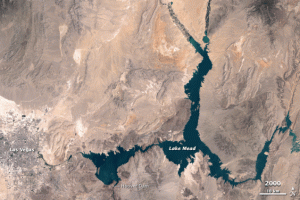
As the GIF shows, water levels have dropped significantly since 2000 — you can see the northern arm shrink down to a dribble, and the shore all around has shrunk, while Las Vegas has expanded into the desert over the same time period.
The water levels at Lake Mead have fluctuated ever since it was first filled in the 1930s. Droughts in the ‘50s and ‘60s saw drops in the water elevation, but with the steady decline over the last decade, the water is as low as it’s been since the lake was first filled. It might take more than just a giant straw to fix this problem. Read "This Giant Straw Will Suck Las Vegas's Water from the Desert."
With El Nino, the likihood of rain and weird weather for California increases.
Water treatment consultant and author Dr. Joseph Cotruvo recently called Legionaries’ Disease, or Legionellosis, “the most important waterborne disease in the United States.” Learn why.
The San Joaquin Valley Is Sinking as Wells Are Over-Pumped
Increased groundwater pumping in California is causing the San Joaquin Valley to sink at a rate of nearly two inches per month, faster than ever before, according to a press release.
The California Department of Water Resources released the information which was collected by NASA in a new report titled “Progress Report: Subsidence in the Central Valley, California,” stated the release.
Because of increased pumping, groundwater levels are reaching record lows — up to 100 feet lower than previous records,” said Department of Water Resources Director Mark Cowin. “As extensive groundwater pumping continues, the land is sinking more rapidly and this puts nearby infrastructure at greater risk of costly damage.”
The state has experienced the sinking land because of groundwater pumping, or subsidence, for decades, noted the release. Now, however, NASA reports infrastructure is at growing risk of damage because the sinking is happening faster.
Subsidence increases risk for damage to infrastructure such as aqueducts, bridges, roads and flood control structures, reported the release. Thousands of public and private groundwater well casings in the San Joaquin Valley have already been destroyed.
Authorities are working with communities to build on the 2014 Sustainable Groundwater Management Act, “which requires local governments to form sustainable groundwater agencies that will regulate pumping and recharge to better manage groundwater supplies,” shared the release. Counties can also receive assistance from the Department of Water Resources with a new $10 million program.
Read the full NASA release and see a picture of a sinking bridge.
Home ownership rates are dropping and we're learning that renters use more water than homeowners. Efforts to change this are complicated. Read this Atlanta CityLab study.
Gazette Numerical Wizard Bea Sharper brings you up to date on the current water news in numbers.
Percentage of trash found on Australian beaches that is plastic -- 75%.
Highest level of microcystin recorded this summer in the Toledo Lake Erie area, in parts per billion – 2.5.
Gallons of contaminant-laden water dumped into the Animas River by the Gold King mine spill-- 3,000,000.
Miles of Colorado's streams that are impaired by mining related impacts – 1645.
Rank of marijuana among the cash crops grown in California - #1.
Percentage of marijuana consumed in the US that is now grown in drought-ridden California—70%.
Estimated value of California's annual marijuana crop – $11 billion.
Value of California's second most valuable cash crop, milk and cheese – $6.9 billion.
Approximate number of separate water districts and agencies that regulate California's use of water—3,000.
Daily per person consumption of water in Sydney, Australia – 83 gallons.
In Irvine, California – 193 gallons.
Rate in inches per month at which land is sinking in the San Joaquin Valley due to overpumping of water wells -- 2.
By CDC estimate, the number of people hospitalized each year in the U.S. with Legionnaires'-related ailments -- 8,000 to 18,000.
Gallons-per-minute pemitted for shower heads under California's new Tier 1 regulation – 2.
Years in which Los Angeles and New York City respectively imposed the same 2 gpm limit on shower heads-- 2009 and 2010.
Pure Water Gazette's proposed time limit on songs that can be sung in the shower –2 minutes, 15 seconds.
Undersink Water Filters: Better than they used to be.
By Pure Water Annie
Gazette Technical Consultant Pure Water Annie explains how undersink water filters have improved in recent years.
An undersink water filter is a treatment device that is inststalled under the kitchen sink but dispenses its treated water on the sink top. This is a very practical and efficient arrangement because it leaves the countertop uncluttered but allows plenty of equipment space for excellent filtration.
Several improvements in recent years have made undersink filters extremely effective, practical, and easy to install and service. These include
- The replacement of copper and galvanized undersink piping with flexible connectors.
- The improvement in filter housing and cartridge designs that allows installation of more compact and easy-to-service filtration units.
- The improvement in filtration technology that allows targeted treatment of many more problem contaminants.

The use of flexible undersink pipes not only makes installation of standard undersink filters with their own dispensiing faucet much easier and safer, it also allows very easy installation of “simple” undersink filters, the type that dispense water through the existing cold water side of the sink faucet rather than an added ledge faucet. (For the difference between "simple" and standard undersink filters, see How Undersink Filters Work.)
Modern filter housings are now available that make cartridge changes as easy as changing a light bulb. Even traditional housings have been improved so that the best brands are easy to open and virtually leak-proof.
Carbon block filters have been steadily improved over the years so that now extra fine powdered carbon provides much more effective filtration and greatly increased cartridge life as compared with old granular carbon filters. In addition, cartridges can now be made to target specific contaminants like lead, arsenic, fluoride, iron, bacteria, nitrates, low pH, and cysts.
This last aspect, the use of “media cartridges” for special purposes, is especially effective with multi-filter undersink units that use two or more canisters with different cartridges.
The classy triple undersink filter shown above has exceptional chlorine/chloramine reduction capacity and can, depending on the cartridges chosen, remove such contaminants as bacteria, cysts, nitrates, colors, sediment, odors, lead, iron, arsenic, fluoride, and more. Go here for a listing of cartridges that will fit this filter.
Going Tankless
by Gene Franks
Since I started using, building, and selling residential reverse osmosis units in the early 1990s, there have been repeated efforts to get rid of the much maligned bladder tank that's a standard feature.
Small reverse osmosis units need a storage tank because they make water very slowly. Without a tank, a typical undersink RO unit would put out only a small trickle of water when the thirsty user opened the faucet. Most of us aren't patient enough to wait several minutes to fill a water glass, much less a couple of hours to fill a spaghetti pot. The function of the bladder tank is to collect and store the trickle produced by the RO unit so that when you put your glass under the spigot the pressurized tank can supply enough water to fill your glass quickly. Or even your spaghetti pot.
The standard RO tank has a small air charge that pushes water out of the tank when the countertop spigot is opened. As the tank fills, the pressure in the tank increases and the RO unit has to work harder and harder to pack water into the tank. As the tank fills and pressure increases, the RO unit's efficiency decreases dramatically. ![]()
Although this standard bladder tank works pretty well at storing and delivering water, it has a flaw. As the tank fills, pressure inside increases, causing the RO unit to have to push against the rising pressure to fill it. When the tank is near full, in fact, the RO unit is really huffing and puffing to push water into the tank and its efficiency is a fraction of what it would be if it were putting water into a pressure-free container. In practical terms this means that a small RO unit whose efficiency is set up to work at 3 or 4 parts to drain to 1 part to storage is actually running 10 or 12 parts to drain to 1 in the storage tank when the tank is almost full and the RO unit is pushing against 40 or so pounds of tank pressure.
Overcoming the Problem of the Conventional Tank
The many attempts to replace the conventional RO tank system fall into three main categories:
The "water on water" tank. The "water on water" strategy is to push the permeate (the water you're going to drink) from the tank with tap water rather than air. The permeate is in a bladder inside the tank. When the spigot is opened, tap water rushes into the tank around the outside of the bladder, squeezes the bladder and pushes the permeate out of the faucet. This is only a semi-solution. Although the RO unit produces water without back pressure in the tank, saving water, water is wasted when it is used to push the permeate out of the faucet. All of the "push" water eventually goes to drain. The worst part is that water on water units seldom work as advertised. Those that I bought and tested failed to shut off reliably when the permeate tank was full. The most recent incarnation of the this style, a hybrid water on water, the highly promoted Next RO, was recently taken off the market because of repeated performance issues caused by its over-complicated water storage scheme.
The electric pump tank. With this style, a small unpressurized tank receives the permeate water, allowing the RO unit to produce without back pressure interference. When the spigot is opened, a small electric pump comes on to push the RO water out of the faucet. This style mimics large "whole house" units, but it's a case where something that works well full size doesn't works so well when it's miniaturized. Most attempts to create the electric pump tank style have fallen victim to complaints of leaks, excessive noise, chattering pumps, high cost, and failure of high tech components. It just isn't feasible to make a pump-driven system that fits under the sink and gives the same silent, trouble-free performance over a period of years as the old-fashioned bladder tank.
The jumbo RO unit. The most popular attempt to replace the bladder tank in recent times has been to simply make a massively over-sized RO unit--one that's so big that it produces as much water as you need on demand, in real time, without having to rely on a storage tank. To put this in context, we build a small countertop RO unit that has a 50 gallon per day production. It is a bona fide tankless RO unit. It produces into a no-pressure container. This works well if you catch the water in a bottle for later use. It produces in theory (with RO, theory and reality are seldom the same) about 2 gallons of water per hour and will fill your 5 gallon bottle in 2.5 hours. If you depended on this unit, however, for real time use, you would have to patiently hold your 8-oz. cup under the dispensing tube for almost 4 minutes to fill it. But, if the unit produced 700 gallons per day rather than 50, you could fill your cup on only about 20 seconds. That's about half speed compared to old reliable bladder tank performance, but you could live with it.
The 700 gallon-per-day production was what was promised by the now defunct Merlin wonder unit that came out a few years ago. The Merlin was a multi-million dollar promotion by its originator, General Electric, and later by Pentair, that got stuck with it as the result of a merger. The Merlin was touted as the "most significant advance in home RO technology in 30 years," but ended being finally pulled off the market in 2010 after years of frustrated customers and failed attempts to fix its many faults. The last heroic effort to save the tank-free Merlin was, you guessed it, the addition of a pressurized storage tank.
To say that the Merlin was a flop is an understatement. What's strange isn't that it didn't work but that that anyone with rudimentary knowledge of RO units thought it would work. I won't dwell on its many design flaws, but I'll mention one problem that automatically spells doom for any attempt to make a tankless undersink RO unit by simply making a big producer and sticking it under the sink.
When a reverse osmosis unit comes on and begins to make water, the first water that comes out of it is the worst it will make. On startup, it spits out some pretty awful water. That's why "whole house" units normally begin with a "flush" cycle that opens the drain and flushes the membrane for one to five minutes before the unit begins collecting water. Obviously, this isn't practical with an undersink unit. So to use a large "water-saving" tankless unit, the logical thing would be to open the faucet and let it run for a minute or so before filling your glass. Or, to be content with drinking the worst water the unit can make every time you fill your glass.
This tankless RO unit (for which an optional tank is available) advertises production of up to 1,000 gallons per day.
The Best Solution
A web search confirms that there are a couple of new jumbo-style tankless undersink units on the market. I haven't looked at them seriously. One has a strange physical resemblance to the ill-fated Merlin. My advice is to never be first on this type product. If they're still selling it in a couple of years and the reviews are good, then consider buying it.
The best solution to the bladder tank problem at present is the permeate pump. This well established addition to conventional RO units does not get rid of the tank but it eliminates back pressure, the main problem caused by the tank, by allowing the membrane to produce into a pressure-free chamber. The permeate pump is not perfect, but it definitely saves water.
The future for water saving with small RO units may be found more in improved membranes than getting rid of the bladder tank. A new Pentair membrane (we're testing it now) is designed to run on a one to one brine to permeate ratio rather than the one to three or four of standard membranes. We'll see.
Please visit our RO Parts Page for tanks and accessories. We also have dedicated parts pages for countertop water filters, undersink filters, and aeration equipment. We stock parts for everything we sell.
Thank you for reading. Please come back next week.
Places to Visit on Our Websites in the meantime.
Garden Hose Filters. Don’t be the last on your block to own one.
Model 77: “The World’s Greatest $77 Water Filter”
”Sprite Shower Filters: You’ll Sing Better!”
An Alphabetical Index to Water Treatment Products
Our famous whole house Chloramine Catcher
Pure Water Occasional Archive: Sept. 2009-April 2013.
Pure Water Occasional Archive: April 2013 to present.
Write to the Gazette or the Occasional: pwp@purewaterproducts.com
Please Visit
The Pure Water Gazette – now now with an up-to-the-minute feed of the latest water news.
![occasionalbanner300[1]](https://ymlp.com/https.php?id=purewatergazette.net/blog/wp-content/uploads/2013/04/occasionalbanner3001.gif)
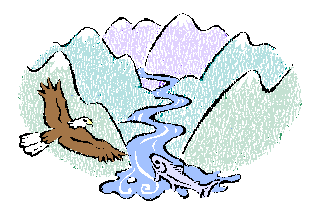

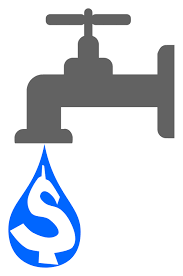
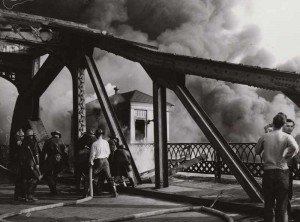
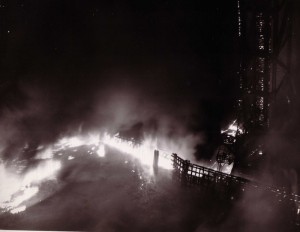
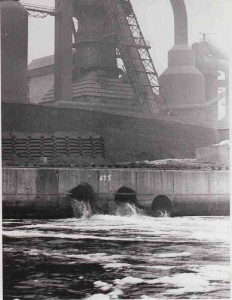
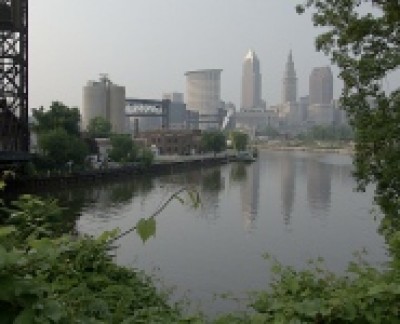



![pwanniemedium[1]](https://ymlp.com/https.php?id=www.purewatergazette.net/blog/wp-content/uploads/2012/05/pwanniemedium1-246x300.jpg)
